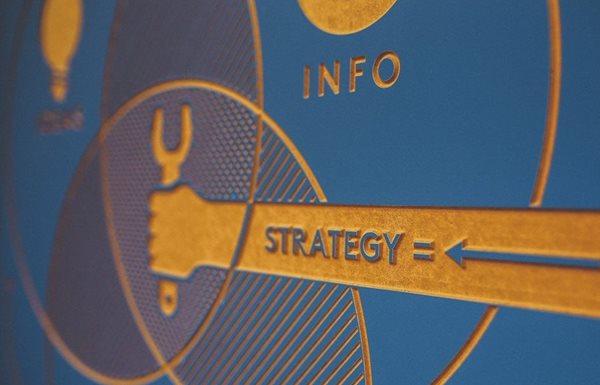In B2B marketing, creating a seamless customer experience can be a key differentiator or justification for a premium. Just how many brands get this right is unknown.

Photo by Kaboompics.com© from
PexelsIn many B2B environments, products and pricing are parity. Most providers have similar or the same offerings, and they don’t differ too much on price. So, what makes people stay with one provider or move to a new one when they are unhappy?
Competing on experience
All B2B customer experience comes down to meeting the expectations that both you and your customer have jointly set. Very often, these expectations aren’t about the actual thing we are selling.
The functionalities of a B2B product or solution are the basis of the expectation – customers expect your product or offering to do what it says it does.
B2B customers, who are notoriously good researchers, will consider you if you meet their basic functional needs - whether the ERP system has a module for warehousing, for example; or whether they need to have a single-sign on point for their finance team.
The other stuff, the lesser loved but well known ‘experiential’ stuff, is where the rubber hits the road. This is the feeling your customers get when the banking portal has crashed, and they have logged a call with a call centre. That feeling of dread – or relief – that’s your customer experience.
Not customer service
You might be thinking “we have awesome customer service so our customer experience is probably great!”. But hold your horses - customer service is only one part of the customer experience equation.
B2B customer experience is the entirety of all touchpoints along the engagement chain - from pre to post purchase. You can have the best customer service team in the world but one bad experience with a user-unfriendly interface or snappy receptionist can bring the whole positive experience crashing down.
When we set expectations for our B2B clients, they hold onto them like gold. These are our promises – the things that we will (or should) fall on our proverbial sword for.
If the client has incredibly high expectations of the company they deal with from an initial experience with one touchpoint (be that a salesperson, online interface, yearly meeting with the CEO) the client will expect the same or better of all other aspects of your business and their experience.
Ultimately, the B2B customer experience is how well expectations of the customer are met and managed at each touchpoint.
Meeting and managing expectations
These expectations are often made in times of success or crisis.
For example: a salesperson wins a big account (a time of success). The sell is a two year-long process and takes a wealth of hard work from the salesperson. The salesperson works directly with the customer management team, answers calls after hours, and even speaks to the product team to make sure the solution is fit-for-purpose.
Once the sale is over the line, the account is handed over to the service team. Because this team knows very little about the journey the customer has taken to get there, they treat the customer like everyone else. They log the customers calls and manage them in the way they have been trained to – fairly and in a helpful but unemotional manner.
Suddenly, it’s six months later and the big client is unhappy. The solution is fraught with bugs and the customer service team is ‘lax’. The salesperson is pulling their hair out – the internal team is letting them down! The customer is disappointed but can’t pull their account because they signed a five-year contract. The customer service team is irritated with the salesperson – why do they keep selling solutions with so many customisations? Why does the customer keep phoning them after working hours to discuss issues?
In the end, everyone is unhappy. In an effort to get a handle on everything, the CEO’s sit down for a discussion on the way forward. And just like that (at a time of crisis), a set of new customer expectations is generated.
Communication is of course, key. If the expectations of the customer had been relayed throughout the organisation and managed from a capacity point of view upfront – the customer experience would have been very different.
Sales and marketing...and the rest of the world
In B2B we often talk about the gap between sales and marketing...but what about the rest of the organisation? What about the gap between the product team and the sales teams? And the executive and the service team?
The cavernous holes that exist in organisations (which we often call ‘silos’) are the biggest threat to customer experience. They are the literal holes in our customer experience. If we managed that upfront though, we may never sell a product.
This is why we tend to be our own worst enemies – we both can’t and won’t manage expectations honestly. We avoid looking at our customer experience because it may mean shifting our operational model. It may mean trying to genuinely understand why the billing team don’t like the service team. It's uncomfortable.
But...here’s the hitch. As B2B organisations, we don’t have much of a choice. If we want to win at customer experience, we need to ask ourselves what expectations we are willing to manage externally, versus the ones we meet internally.
My customer experience
One of the keys to a great B2B customer experience is allowing the customer to feel like they are part of creating it. Many B2B customers will value those transactions that go beyond everyday support and seek to build a partnership. A common adage in the B2B community is that “it’s all about the relationship”.
These ‘relationship dynamics’ often involve creating the kind of experience your customer wants, on a personal level. This may mean more regular calls to check in, or once-a-year roundtables. Whatever this looks like, if the customer feels as though their expectations are honestly managed, and then accurately met, you’ll have a happy client.
While customer experience hasn’t overhauled the world of B2B just yet – it is coming. After all, our buyers are human beings using Uber and Airbnb. Expectation transfer from B2C to B2B is inevitable.
Will you wait to meet that expectation – or will you lead it?


























